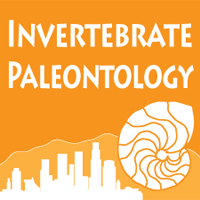Welcome to Invertebrate Paleontology
The Invertebrate Paleontology department of the Natural  History Museum of Los Angeles (LACMIP) houses fossils of animals that lack a backbone (non-vertebrates), such as arthropods (e.g., crabs and shrimps), molluscs (e.g., clams and snails), echinoderms (e.g., sand dollars and sear urchins, and corals. The Invertebrate Paleontology department also houses collections of ichnofossils (traces of previously living organisms. These may include track ways, burrows, borings, and coprolites (fecal pellets). Invertebrates comprise 95% of Earth’s biodiversity and include about 30 different phyla.
History Museum of Los Angeles (LACMIP) houses fossils of animals that lack a backbone (non-vertebrates), such as arthropods (e.g., crabs and shrimps), molluscs (e.g., clams and snails), echinoderms (e.g., sand dollars and sear urchins, and corals. The Invertebrate Paleontology department also houses collections of ichnofossils (traces of previously living organisms. These may include track ways, burrows, borings, and coprolites (fecal pellets). Invertebrates comprise 95% of Earth’s biodiversity and include about 30 different phyla.
Invertebrate fossils occur throughout most of Earth’s geological history. They may be found in marine, freshwater, and terrestrial (land) habitats. Invertebrate fossils are very useful in many types of scientific study, such as determining the correlation and order of rock layers (stratigraphy), dating of rocks (biostratigraphy), and reconstruction of ancient environments. In addition, these fossils are used to help classify and establish the relationships between ancient life.
About the LACMIP collections
The LACMIP collections are the fifth largest in the country, with an estimated 4-6 million specimens. These collections span the Phanerozoic, but represent the world’s largest collection of Cretaceous-Cenozoic mollusks from the Pacific Rim. The collection has grown through a century of research by NHM staff, but has also brought together important former collections from the California Institute of Technology, California State University Northridge, University of California Los Angeles, and University of Southern California.
We are presently developing new database tools that will enable greater exploration and discovery of these collections. Our existing database contains information on almost 30,000 fossil invertebrate localities and nearly 1 million specimens. Our type collections of 11,000 specimens are also included in the database. Cataloging is an on-going process, and we add new information daily. The database currently holds hundreds of digital images of specimens, in addition to maps, photographs, and pertinent field notes have been scanned and included for many collecting localities. Check out our summary of stratigraphic and geographic coverage in the database. A formation-level inventory can be found here. The initial database development and cataloging efforts were funded by a grant from the National Science Foundation to digitize NHM’s extensive holdings of Pleistocene fossils from the West Coast of North America.
Recent activities
The Invertebrate Paleontology department has completed three NSF-funded digitization and curation projects, EPICC, Fossil Insects of L.A., and the Cretaceous Seas of California.

Follow us on Facebook, Instagram, Twitter (@FossilsofLA) for updates on current happenings at the LACMIP. We update weekly on collection activities, visitors, new accessions, events, and research published on the LACMIP collections. Fossils of L.A. is an initiative of LACMIP to digitize common local marine fossils in their paleontological collections. Fossils of L.A. leverages the availability of digital images and online media to build a greater awareness and appreciation of Los Angeles past biodiversity, as well as provide a web resource for the scientific and education community in which common fossils of southern California can be simply and rapidly identified.
